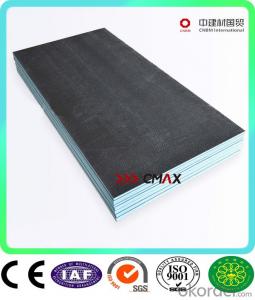Roofing insulation is a crucial aspect of home construction and renovation. It’s not just about keeping your home warm in the winter and cool in the summer; it’s also about saving energy and reducing your carbon footprint. But, how do you ensure that your insulation stays in place and performs optimally? That’s where roofing insulation fasteners come into play.
The Importance of Insulation Fasteners
Insulation fasteners are small but mighty components that secure insulation materials to the roof deck, preventing them from shifting or falling. They are essential for maintaining the integrity and performance of your insulation system. Without them, your insulation could be compromised, leading to increased energy bills and a less comfortable living environment.
Types of Insulation Fasteners
There are several types of insulation fasteners available, each designed for specific applications and insulation materials. Some common types include:
– Nails: Traditional and widely used, nails are suitable for securing batten insulation in place.
– Screws: Offer a stronger hold and are often used for securing rigid foam insulation boards.
– Adhesives: Ideal for lightweight insulation materials that require a more delicate approach.
– Clips and Brackets: Used for securing insulation in areas where other fasteners may not be suitable.
Choosing the Right Fasteners
Selecting the right insulation fasteners depends on the type of insulation material, the roof’s structure, and the climate in which your home is located. It’s important to consider the following factors:
– Material Compatibility: Ensure the fastener is suitable for the insulation material you’re using.
– Load Bearing Capacity: Fasteners should be able to support the weight of the insulation and withstand environmental conditions.
– Corrosion Resistance: Fasteners should be resistant to rust and corrosion to ensure a long-lasting hold.
– Climate Considerations: Some fasteners may be better suited for colder or warmer climates due to their material properties.
Installation Process
The installation process of insulation fasteners is relatively straightforward but requires precision and attention to detail. Here’s a step-by-step guide:
1. Inspect the Roof: Before installing insulation, inspect the roof for any damage or irregularities that may affect the installation process.
2. Lay Out the Insulation: Plan the layout of the insulation to ensure proper coverage and fit.
3. Secure the Insulation: Using the appropriate fasteners, secure the insulation to the roof deck, ensuring even spacing and proper alignment.
4. Check for Stability: After installation, check the insulation for any movement or instability. Make adjustments as necessary.
5. Seal and Weatherproof: Apply sealants and weatherproofing materials to protect the fasteners and insulation from the elements.
Maintenance and Inspection
Regular maintenance and inspection of your insulation fasteners are crucial to ensure their continued performance and the overall effectiveness of your insulation system. Check for signs of wear, corrosion, or damage, and replace or repair as needed.
The Benefits of Proper Insulation Fastening
Securing your insulation with the right fasteners offers numerous benefits, including:
– Enhanced Energy Efficiency: Properly secured insulation helps maintain a consistent temperature inside your home, reducing the need for heating and cooling systems to work overtime.
– Improved Comfort: A well-insulated home is a comfortable home, with even temperatures and reduced drafts.
– Long-Term Savings: Investing in the right fasteners and maintaining them can lead to long-term savings on energy bills and repair costs.
– Environmental Impact: By reducing energy consumption, you’re also reducing your home’s carbon footprint and contributing to a healthier environment.
Conclusion
Roofing insulation fasteners may be small, but they play a significant role in the overall performance of your home’s insulation system. By understanding the importance of these fasteners, choosing the right type for your specific needs, and following proper installation and maintenance practices, you can ensure that your insulation stays in place and works effectively to keep your home comfortable and energy-efficient. Remember, a well-insulated home is not just a cozy retreat; it’s also a smart investment for your future.

